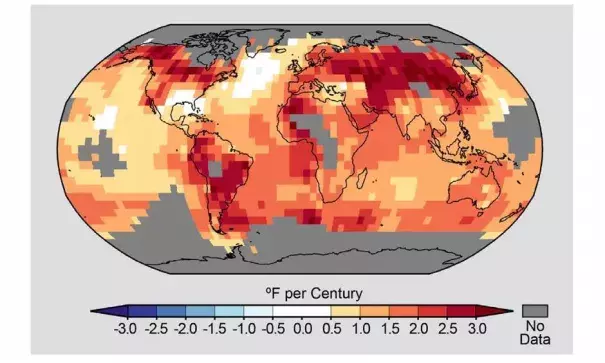This strange spot in the Atlantic is resisting global warming. Scientists think they know why.

A new study has joined a growing body of literature suggesting the cold patch is evidence that a major ocean current system — which transports heat and influences climate and weather patterns around the world — may be slowing down. What’s more, the melting of Arctic sea ice could be to blame.
...
The “warming hole” is a region over the North Atlantic, just south of Greenland, where long-term temperature maps suggest air temperatures have been cooling slightly over the last century, rather than warming like most of the rest of the world. The warming hole is situated over roughly the same part of the ocean where a so-called cold “blob,” a zone of water persistently cooler compared to the surrounding area, was discovered several years ago.
The causes of both have been the subject of some spirited scientific debate in the last few years, and some scientists believe they are related to the same phenomenon. The theory suggests that not as much heat is getting transported to that region of the North Atlantic anymore — and this could indicate a big problem with one of the ocean’s most important currents.
The Atlantic Meridional Overturning Circulation, or AMOC, is a powerful conveyor-like current system that carries warm water north from the equator and sends cool water back down from the Arctic. It’s responsible for transporting heat all over the ocean and regulating weather patterns in places like Europe and eastern North America. But some recent studies have suggested that the AMOC may be slowing down, which could explain why less heat is reaching the North Atlantic.


